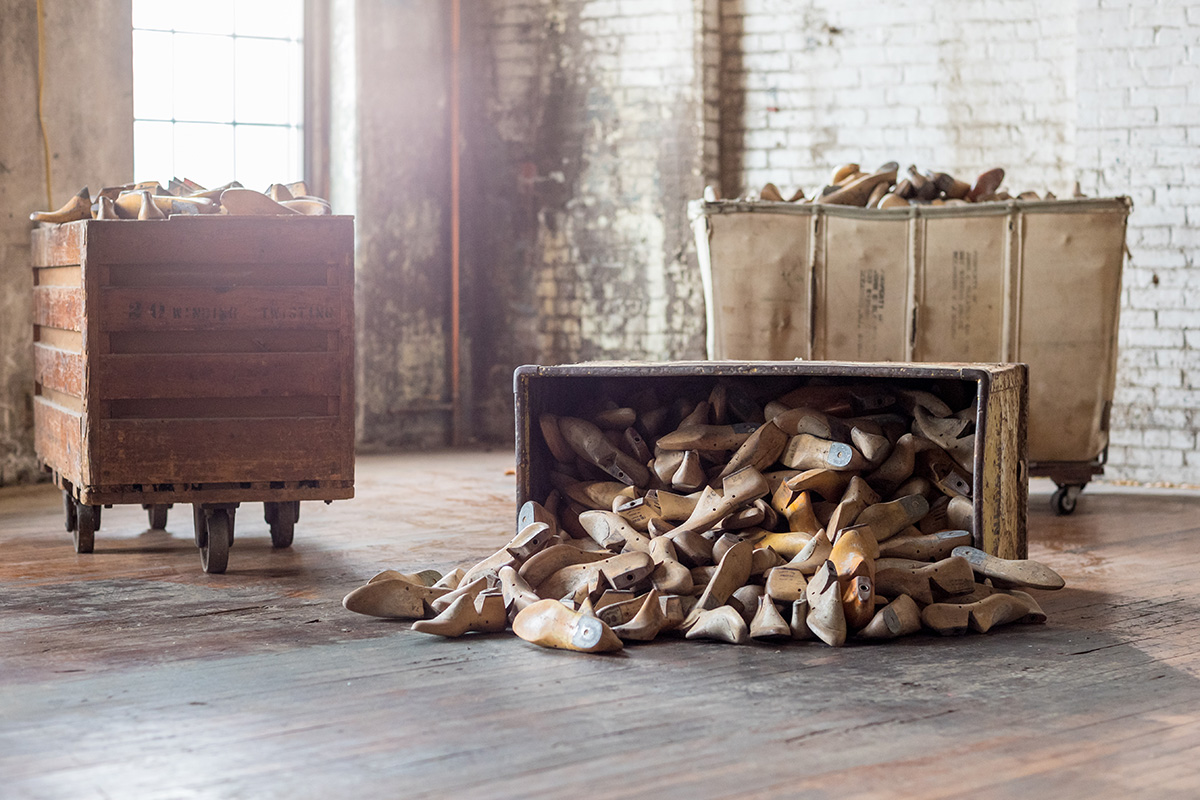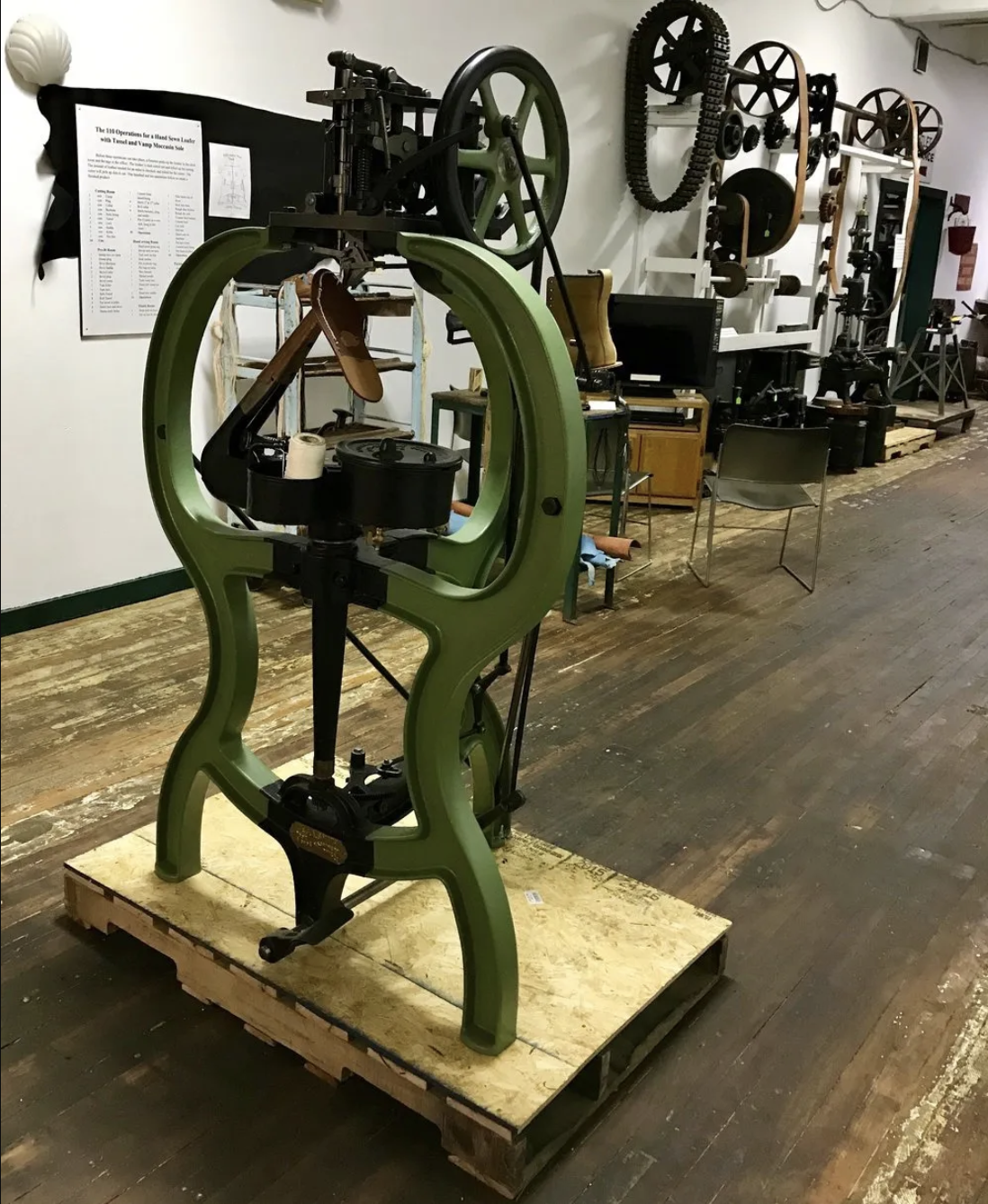Learn
Shoes + Shoemaking
A Brief History
As textile mills began to flourish in Lewiston, Auburn was quickly establishing itself as a center of shoe manufacturing. By the 1860s, several shoe shops were operating in the city. Among the most notable entrepreneurs was Ara Cushman, who, in the 1870s, experimented with a canvas-top, leather-sole shoe. His company later became the Cushman Hollis Company, and in 1904 his son introduced both white canvas shoes and athletic shoes. This innovation earned Auburn the title of “White Shoe City of the World.” At its height, the company employed 2,100 workers and produced 26,000 shoes per day across multiple shops.
The industry reached its peak in the 1920s, when 12 major factories employed 8,000 workers and produced 70,000 shoes daily—about 25 million pairs annually—making Auburn the nation’s fifth-largest shoe producer. In 1917, one Auburn factory alone supplied 75% of the world’s white canvas shoes. While textile mills steadily declined and closed during the 20th century, several successful shoemakers remain active in the Lewiston-Auburn region today.

Production
Shoemaking has deep roots in New England, dating back to the colonial era, when cobblers crafted shoes by hand in homes or small shops. The Industrial Revolution transformed the craft with inventions such as the sewing machine, and by the 1880s nearly every stage of shoemaking had been mechanized. A pivotal innovation came in 1885, when Jan Matzeliger, an African American inventor, patented the lasting machine, which mechanically attached the upper to the sole. This machine increased production to between 150 and 700 pairs of shoes per day.
Producing a hand-sewn loafer, however, remained remarkably complex—requiring 110 distinct steps even after the foreman had gathered and sorted the leather. The process involved:
-
Cutting Room: 24 separate cuts using steel “dies” or patterns.
-
Pre-fit Room: 51 operations preparing the shoe pieces.
-
Hand-sewing Room: meticulous hand stitching, often completed at home by women and girls paid on a piece-work basis.
-
Finish Room: lasting, roughing, attaching soles, molding, steaming, and drying.
-
Packing and Shipping: boxing the finished shoes and preparing them for distribution.
This system combined industrial efficiency with skilled craftsmanship, producing footwear that set Auburn apart as a leader in the industry.

Meet Ara Cushman
Ara Cushman began making shoes by hand in 1853 in West Minot, Maine. He initially traveled the state with horse-loads of shoes, gradually building a business that soon required additional workers—though much of the work was still done by hand.
In 1863, Cushman moved his operations to Auburn to take advantage of new transportation links by rail and canal. His business incorporated in 1888 as the Ara Cushman Company, one of the first to adopt cutting-edge machinery such as the McKay stitcher, which efficiently attached uppers to soles. By 1880, his factories employed 1,000 workers and gained recognition for producing canvas shoes for men, women, and children—the earliest sneakers.
Cushman also pioneered profit-sharing, allowing employees to receive a percentage of annual company profits. His business eventually became the Cushman-Hollis Company, headquartered on Court Street in Auburn.
Beyond his factories, Cushman was deeply involved in civic life. He helped fund the construction of the Universalist Church, served on the founding committee of Maine General Hospital, and supported both abolitionist and temperance causes. His contributions left a lasting impact on Auburn’s industrial and community history.

